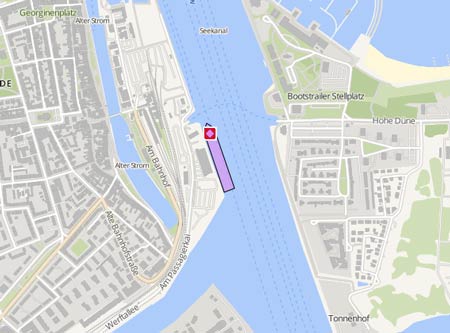SUSAN LYNN
Course/Position
Latest ports
Latest Waypoints
Latest news
NTSB published report in engine room fire
The National Transportation Safety Board has issued its report on incident in which the 'Susan Lynn' sustained an estimated $1,350,000 of damage after an engine room fire broke out. On Oct 8, 2019, the vessel was docked and in layup status at Tom’s Marine & Salvage yard on the Barataria Waterway in Lafitte, when at about 6.00 a.m., a fire started in the engine room. The vessel’s watchman could not contain the fire and evacuated the vessel. Local firefighters extinguished the fire. No pollution or injuries were reported. “The Susan Lynn was nearly 60 years old, laid up by its previous owner, and prevented from operating by the Coast Guard because of a substandard hull in need of gauging and repairs. Maintenance and the condition of the port generator were explored as potential causes of the fire due to the continual use of the port generator for about 63 days (1,512 hours) with the starboard generator out of service. However, other than identifying that the servicing of the port generator did not follow the schedule and tasks recommended by the manufacturer, investigators did not find evidence that the port generator was in an unsatisfactory condition before the accident. The heaviest fire damage was in the engine room, near the generators, with additional damage on the main and second decks forward of the galley. The vessel was equipped with fuel shutoff valves, which are intended to secure fuel to the engine and engine room in an emergency. Had they been secured, there would have been less fuel available to feed the fire. The fire’s spread beyond the engine room was likely the result of the interior forward and after centerline upper engine room doors being left open while the vessel was laid up and remaining open throughout the fire. Minimal damage was visible in the galley where a similar type door on the centerline between the laundry space and the galley was shut. The only visible damage in the galley was a blackened area of the overhead surrounding the galley vent fan located in the overhead just aft of the door to the laundry space. While the vessel was in layup, the normal position of the engine room doors should have been closed, as a fire safety measure. Examinations of the vessel by Coast Guard investigators and inspectors, a Louisiana State fire marshal investigator, and the Susan Lynn’s operator provided limited evidence to identify the cause of the engine failure and subsequent fire. Detailed evidence was not available because a forensic examination of the port generator engine was not conducted, nor was the engine rebuilt. If the engine had been rebuilt, damaged components could have been identified as it was disassembled, which could have provided additional facts to help conclude the cause of engine failure. Because of the limited evidence, the exact cause of the fire and the generator’s engine casualty cannot be determined. However, based on the evidence that there was damage to the port generator engine’s number 3 cylinder connecting rod and oil reservoir, the rupture of the oil reservoir may have been caused when part(s) of the failing connecting rod and/or a piston struck the inside wall of the oil reservoir. A rod and/or piston striking and then rupturing the oil pan would have released oil into the engine room under heat and pressure. This ejected lube oil mist may have ignited off a hot surface, potentially the generator’s unlagged (not insulated) exhaust components. The intensity and duration of the fire was likely exacerbated by the melting of the bowl on the bottom of the generator’s Racor fuel filter combined with the vessel’s fuel shutoff valves not being closed, allowing additional fuel for the fire. The National Transportation Safety Board determines that the probable cause of the fire was a “catastrophic engine failure resulting in an oil reservoir breach and an ensuing fire initiated by ejected lube oil igniting off a hot surface. Contributing to the extent of the fire were the open engine room doors and the unsecured fuel shutoff valves.”
Four injured in tug fire
Firefighters in Lafitte, LA, battled a fire for hours which broke out aboard the 'Susan Lynn' in the morninghours of Oct 8, 2019. Four firefighters suffered heat related injuries and were hospitalized for treatment. All were expected to recover soon. Officials are investigating the cause of the fire. Video: https://www.firehouse.com/safety-health/video/21109498/four-lafitte-la-firefighters-hospitalized-after-battling-tug-boat-fire
Upload News


